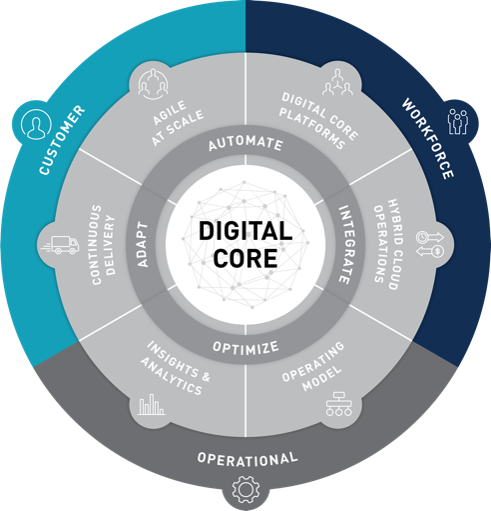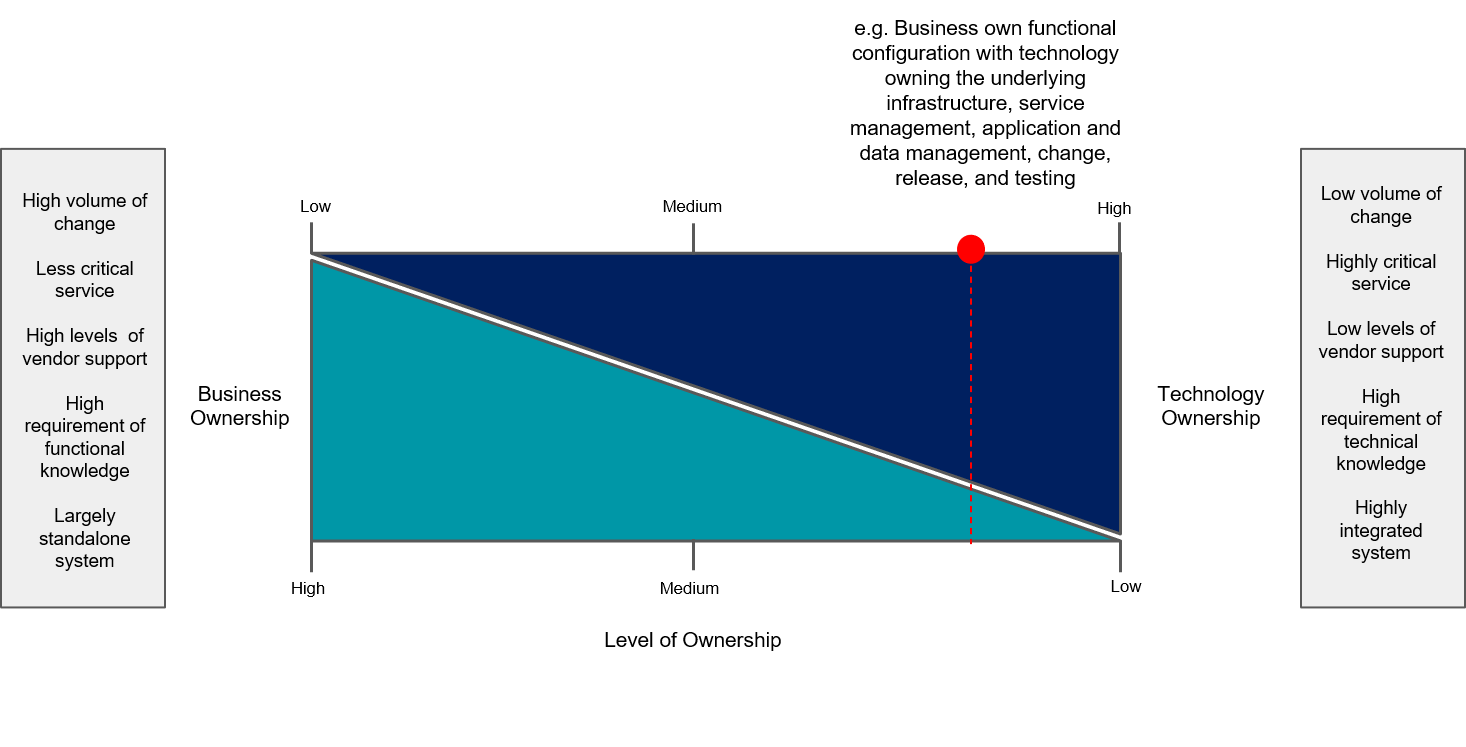The technology landscape is changing at a whirlwind pace: Look no further than the surge in Software as a Service (SaaS) adoption. As a result, the lines between business and technology responsibilities, capabilities, and processes are increasingly blurred. And operating models must keep up. A strong operating model, grounded in a cross-functional partnership between business and technology, is one vital piece of a robust digital core—one that powers continuous change and transformation.

Ultimately, the right operating model is integral to your digital core. In turn, it can also help you capture the full value of SaaS. The end goal? To deliver seamless end-to-end service experiences for end-users and customers. The model brings business knowledge closer to the service development lifecycle and helps organisations strike the critical balance between speed to market and ongoing service provision.
When designing and implementing one of these models, carefully consider five key factors covered in our SaaS Service Ownership Scale:
- Volume and velocity of change
- Criticality of service
- Vendor support
- Functional knowledge requirements
- Level of integration with other systems
As you explore these factors, a few actionable principles should serve as your guide: foster a one-team mentality, focus on end-users, and instil a continuous improvement (CI) mindset that drives an effective roadmap for the future. We will explore each of these later in our blog.
What is a cross-functional operating model?
Where do you begin when designing a cross-functional operating model? First, satisfy a few core prerequisites. For example, the business should remain accountable for the value and outcomes delivered to end-users. Further, it should own the functional configuration of the SaaS solution. Then, the technology team comes into play. Technology should continue to own the underlying integrations, technical infrastructure, and IT service management. Your position on the SaaS Service Ownership Scale can then inform how business and technology teams divvy up the remaining areas of service ownership. These include application and data management, change, release, and testing.
Suppose the business owns one or more of these other areas. In that case, it must work within technology parameters (e.g., ITIL process adherence/training) and possess the right skillsets to drive service delivery and stability. Change management underscores how this approach works in practice. By classifying configuration into clear categories, you can determine the required level of technology assurance and governance. This tactic ensures that highly complex changes (i.e., those likely to impact integrations or downstream systems) receive the necessary level of technology assessment and input. Conversely, low-complexity changes can be developed, tested, and implemented at pace with almost full business autonomy.
This approach brings the business closer to the service's target outcomes, with the ability to drive functional change flexibly and swiftly. In other words, the service delivers on business needs while assuring system stability and availability.
But even if business teams embrace the right approach, ongoing challenges remain. Specifically, business leaders must confront how to create compelling career paths and keep technology capabilities and skills current when taking on legacy technology roles. These challenges have far-reaching implications: Total cost of ownership (TCO) and economies of scale also come into play. In other words, the business may be duplicating functions that are already well established in the technology function. These challenges have yet to be fully answered. As a result, an organisation may implement a particular flavour of the cross-functional model on day one and then transition to another over time.
The hallmarks of a robust cross-functional operating model
Start with the following principles to maximise service delivery value through your operating model.
- Foster a one-team mentality
A one-team mentality sets the tone for collaboration across teams with competing priorities (e.g., system stability in technology vs. speed of change within the business). Consider opportunities to co-create strategy, make joint vendor selection decisions, and cultivate a shared sense of ownership in decision-making.
To foster a one-team mindset, building your RACI together can clarify roles and responsibilities. Start by making a clear RACI for each of the elements needed to deliver the service. Define clear owners for each. This exercise will get both technology and the business thinking about best collaborating for maximum end-customer value.
- Users come first
Start with your target outcomes and work backwards (collaboratively, of course) from there. This approach arms you with a litmus test for planning and decision-making throughout the service delivery lifecycle. By keeping your eye on what's essential to the end-user, you can make decisions with the ultimate vision in mind. A laser focus on the end-user also helps balance the competing priorities of speed to market vs. ongoing service provision while helping teams avoid emotive decision making.
- Build an effective roadmap for the future
Continuous improvement (CI)—bolstered by a product mindset—helps you quickly re-configure, test, release, and improve processes to adapt to user needs. This discipline also enables you to resolve issues and extract additional value from the service. Invest in the people, processes, and technologies needed to accelerate continuous improvement and unlock the potential of your SaaS solution.
A practical roadmap also requires you to think big: Consider how the SaaS solution plugs into the broader technology estate.
A defined, streamlined approach for managing all continuous improvement channels encompasses vendor releases, small changes, enhancement, internal projects, problem management, etc. When you pair this approach with a joined-up mechanism to prioritise business and technology activities, you're well-positioned to deliver on end-user and business needs with your SaaS solution.
One size doesn't fit all
Ready to get started? You must first acknowledge that there's no one "correct" starting point on the SaaS service ownership scale. It all depends on your position relative to the five variables at a point in time. This position is subject to change. As such, the best approach is an adaptive one. Understanding your place on the scale before design and agreement of ownership principles is key:

Sure, the rapid uptake in SaaS solutions has brought its own set of challenges. Yet, it's also created new opportunities for value through cross-functional operating models. To tap into these opportunities, you must first navigate the delicate balance between business and technology ownership. A one-team mentality, end-user focus, and an effective roadmap for the future can help you cross the business-technology divide, configuring an operating model that powers the digital core and amplifies SaaS value.
Related Content




